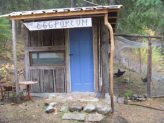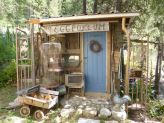What on earth does that mean?
A modular green roof is built in sections, sometimes as small as 10×20 inches, in a tray or block so that they’re easy to handle and assemble, yet in time the plants will root into adjacent trays and make a uniform mat.
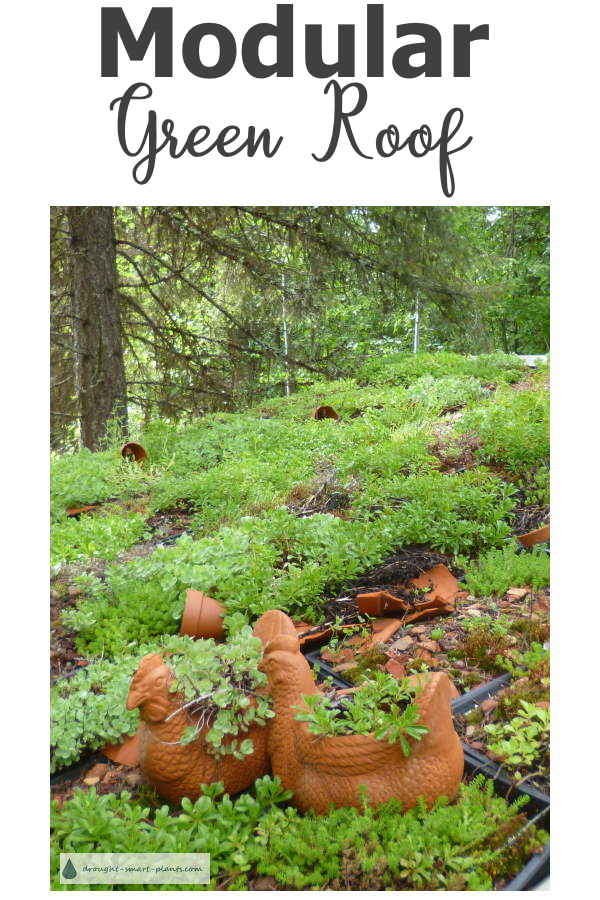
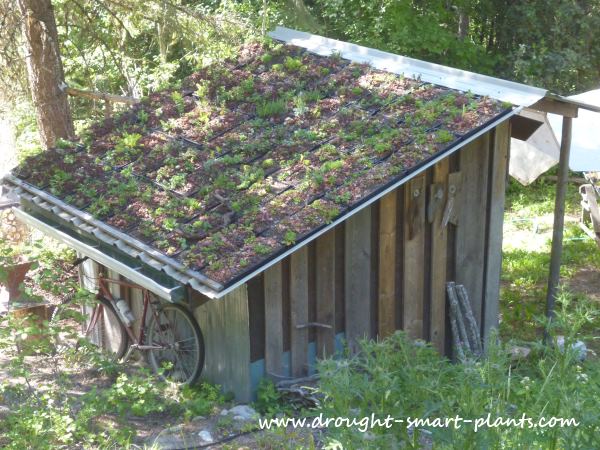
I already have a bit of experience with green roofs of another design – built right on top of a flat roofed root cellar, using epdm rubber roofing for a waterproof membrane, and topped with engineered soil and native soil mixed together, and planted with many kinds of Sedum.
You can see more about that project here: Glory Be, the Root Cellar.
For this project, after enjoying most of the view from my new house site, I realized that I had the perfect place to put together a modular green roof.
After some careful measuring (by flinging an empty flat up on the roof) it was pretty evident that the roof and the metal profile itself would be perfect for exactly fifty flats.
So, then the work began.
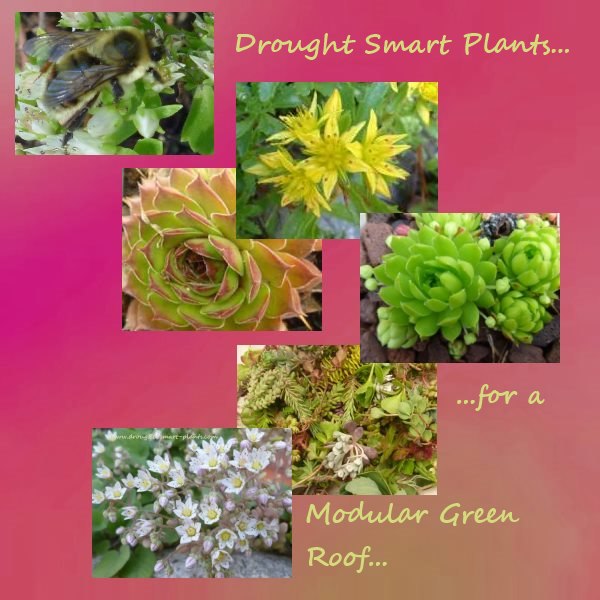
Low growing and drought tolerant; these are the criteria for plants that will survive on a green roof; this is my favorite part of any project, and the Modular Green Roof is no exception…
Salvaging bags of used potting soil, and mixing it with about one third very finely pulverized compost, I planted many different kinds of Sempervivum.
These were mostly duds from plug production, chicks off orders that were being prepared for shipping, or by thinning some really dense clumps from the xeric garden.
I also added some Sedum, generally just trimmings from plugs or from established plantings that needed a hair cut.
Each flat got about six of each, and in time, they will most likely get handfuls of excess cuttings of Sedum and the odd Sempervivum or Jovibarba chick flung up there too.
Here’s a gallery of the modular green roof in progress:
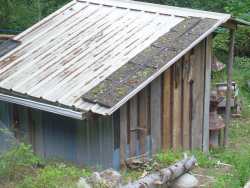
July 26 2012
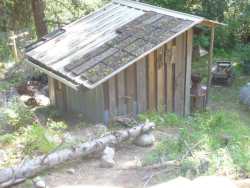
July 28 2012
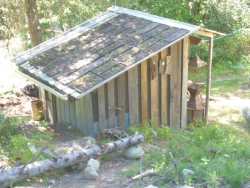
July 29 2012
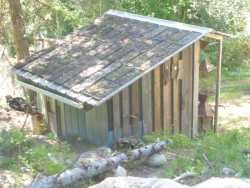
August 1 2012 – Finished – for now…
Once the plants start to fill in, I’ll sprinkle some worm castings on top, and some lava rock to hold the soil in place.
I also need to put a long board across the bottom to hold the flats from cascading off after they get a whole lot of snow on.
I’m pretty confident that the plants will be happy there, and the ones that survive will no doubt be really vigorous and healthy.
Update May 2016; Taking all the flats down and weeding them is a chore, but it’s important to get those wind blown seedlings pulled before they seed.
It also gives me a chance to fill in any blank spots with proven tough plants that have already filled in.
I also sprinkle dolomite lime on the flats, because of where they live – right below several Douglas Fir trees that are constantly dropping their needles on them.
That reduces the acidity in the soil, making it possible for even lime loving plants to perform well.
If they looked really pale, I would also give them some compost tea or worm castings, but this time around, the compost in the flats is still providing some nutrients.
The best time to do this? After the flats have dried out from lack of rain for a week or two, and just before a spate of showers in the forecast. Believe me, the flats are much lighter to haul down off the roof when they’re not wet!
Here’s a short list of what’s doing particularly well in this project;
I decided to plant some cuttings of Sedum selskianum too. This forms a bushy little plant which is super tough, seeming to root into almost nothing. A good option? We’ll see.
Although I’ve planted some Jovibarba in there, as well as several kinds of Sempervivum, these are not reliably hardy on a roof, so if they don’t make it, I don’t replant them.
Interestingly, the flats with lava rock as mulch didn’t do as well as those with tumbled brick. I aim to keep a close eye on this.
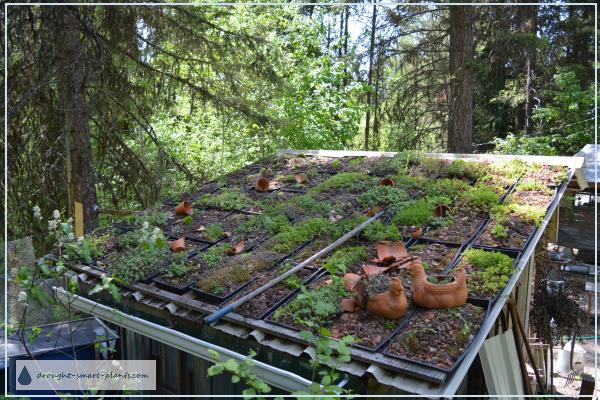
Here’s what the Modular Green Roof looks like in May 2016
Update June 2017
Last summer I took each and every flat off, renovated them, weeded them, top dressed them all with Dolomite Lime, and replanted new plants into any bare spots.
This is how they look now;
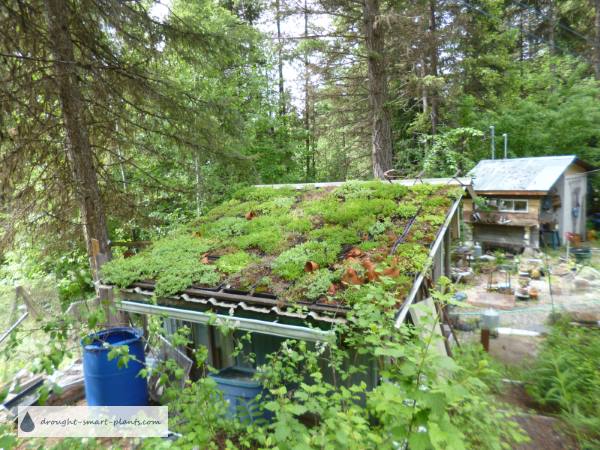
Lush and full Sedum plants on the Modular Green Roof – June 2017
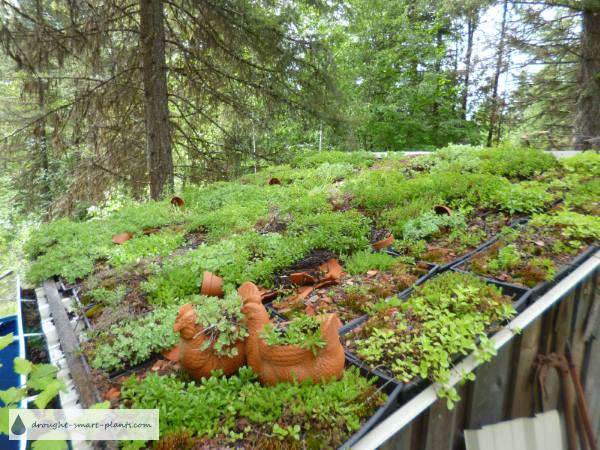
The guardian terracotta hens
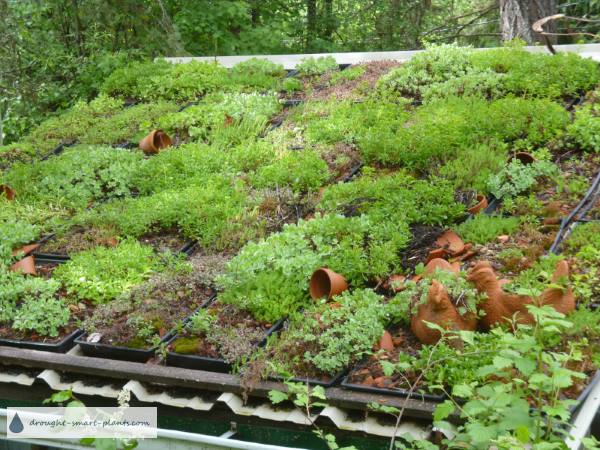
Tapestry effect of all the different species and varieties of Sedum
Update May 2022
After a couple of years intervening (Pandemic, anyone?) this is how it’s looking now. Spring is slow this year, but there’s lots of growth happening, and this could be the penultimate year.
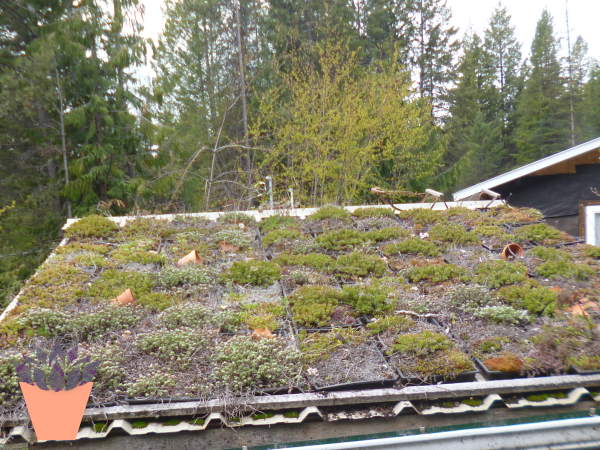
Modular Green Roof May 2022
This project is the epitome of ‘survival of the fittest’.
Even though I keep throwing new species on there, they don’t all make it, leaving room for moss or stronger plants to get a foothold.
Now, in the middle of July, 2022, the modular green roof has come into its own. The plants are lush and prolific, and obviously totally happy in their new sunny situation (we cut down some trees and they are no longer overhanging the roof).
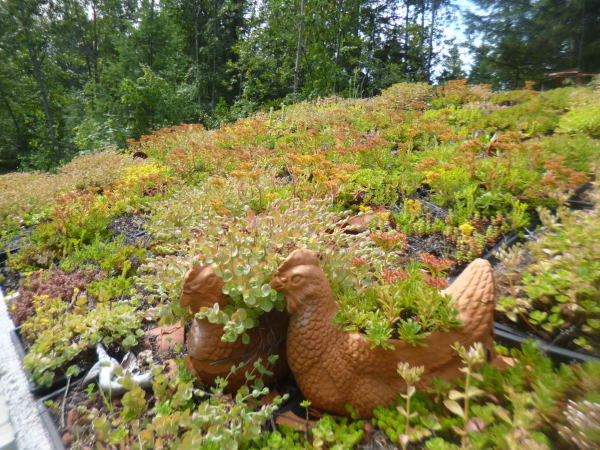
Many different Sedum on the modular green roof, July 13, 2022
This just proves exactly how tough and resilient these plants are. They have a shallow root run, often no water, yet are covered with two to three feet of snow all winter.
The only time they are irrigated is by mother nature, in whatever form that takes.
The flats they are planted in fit perfectly between the ribs of the metal roof, and held in place only by the one single piece of wood.

